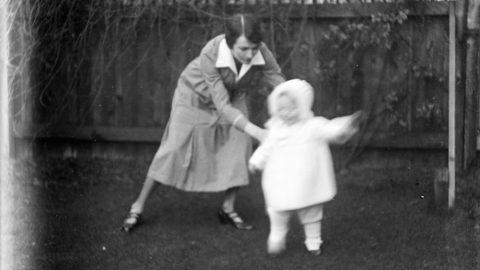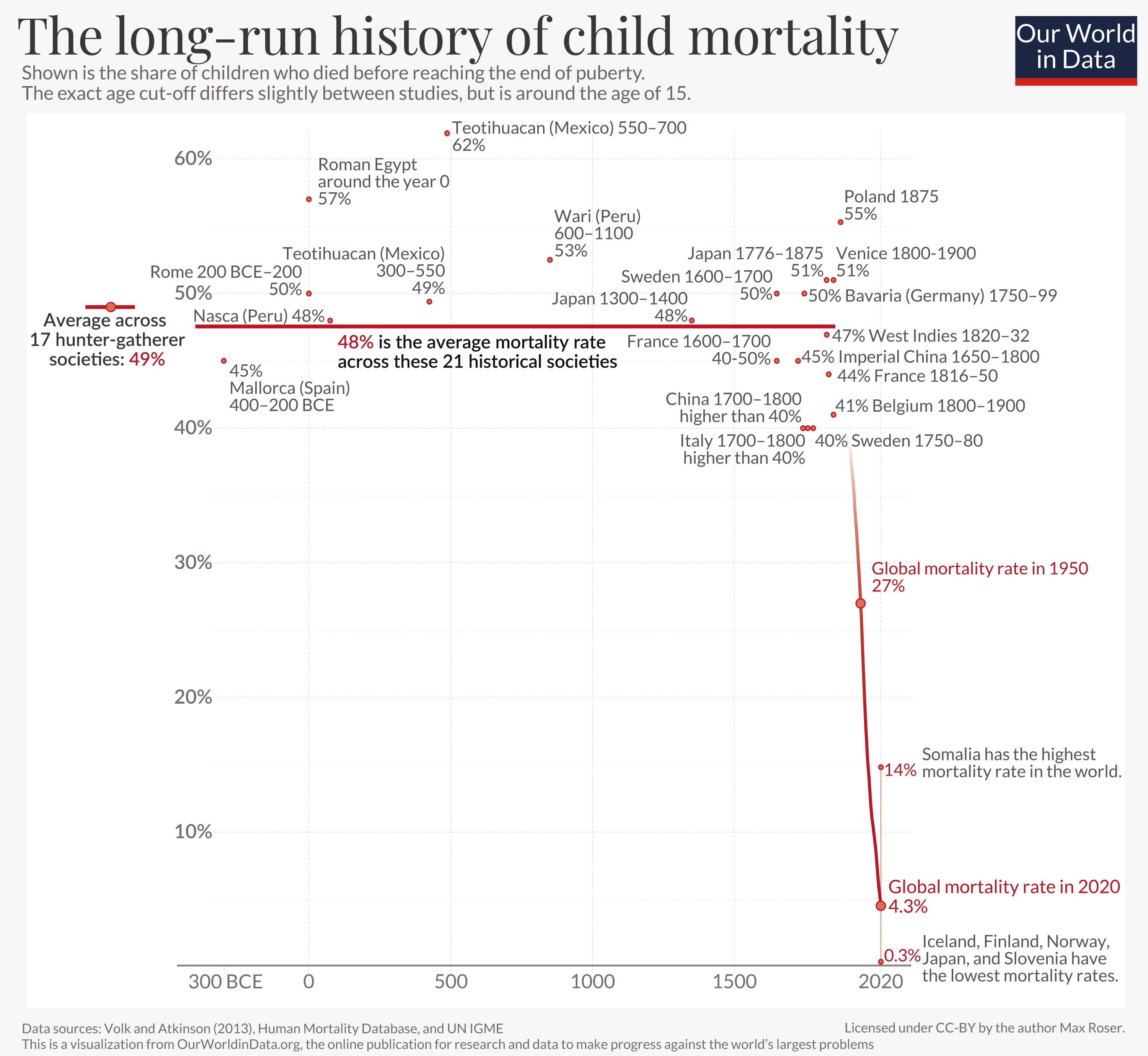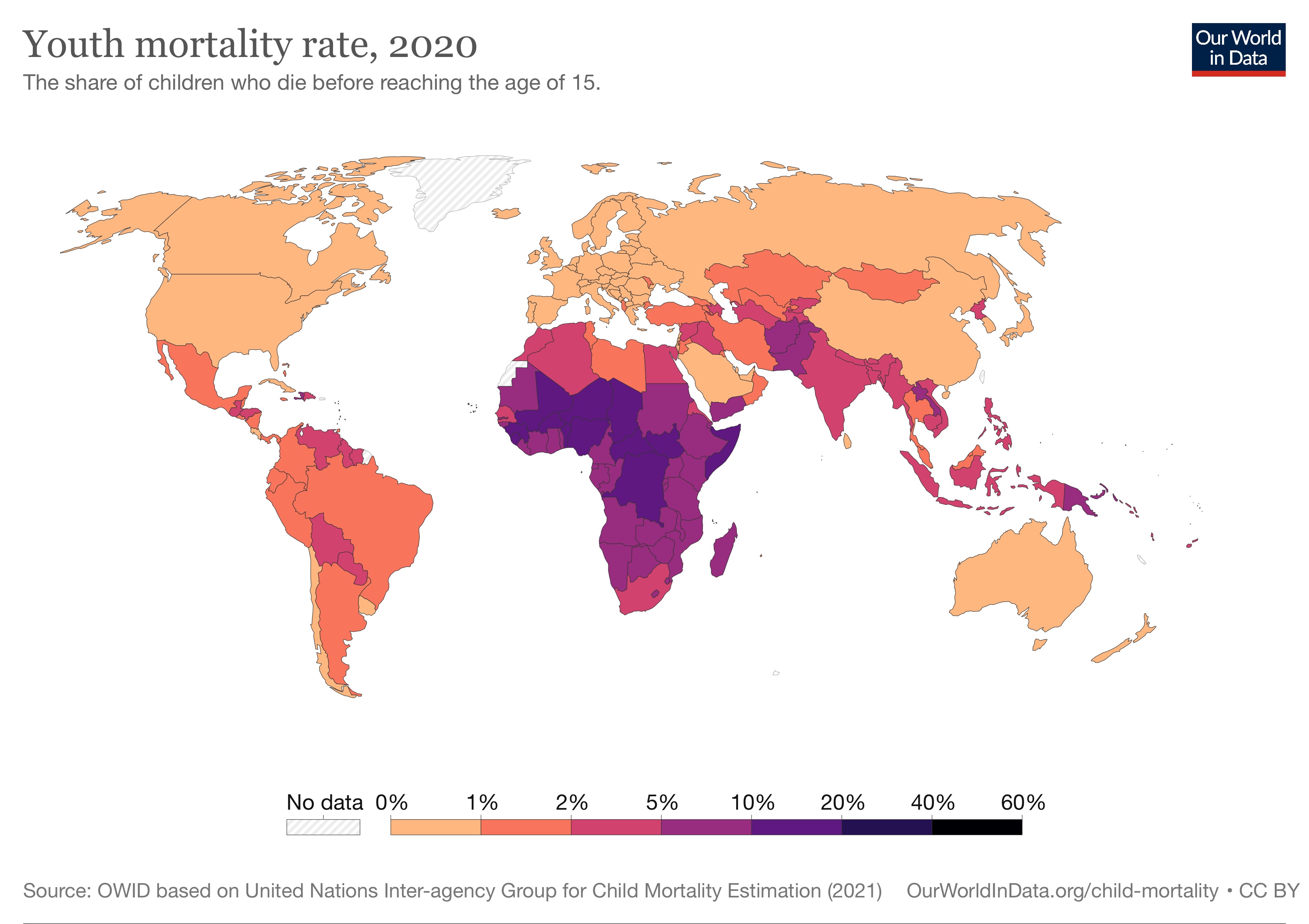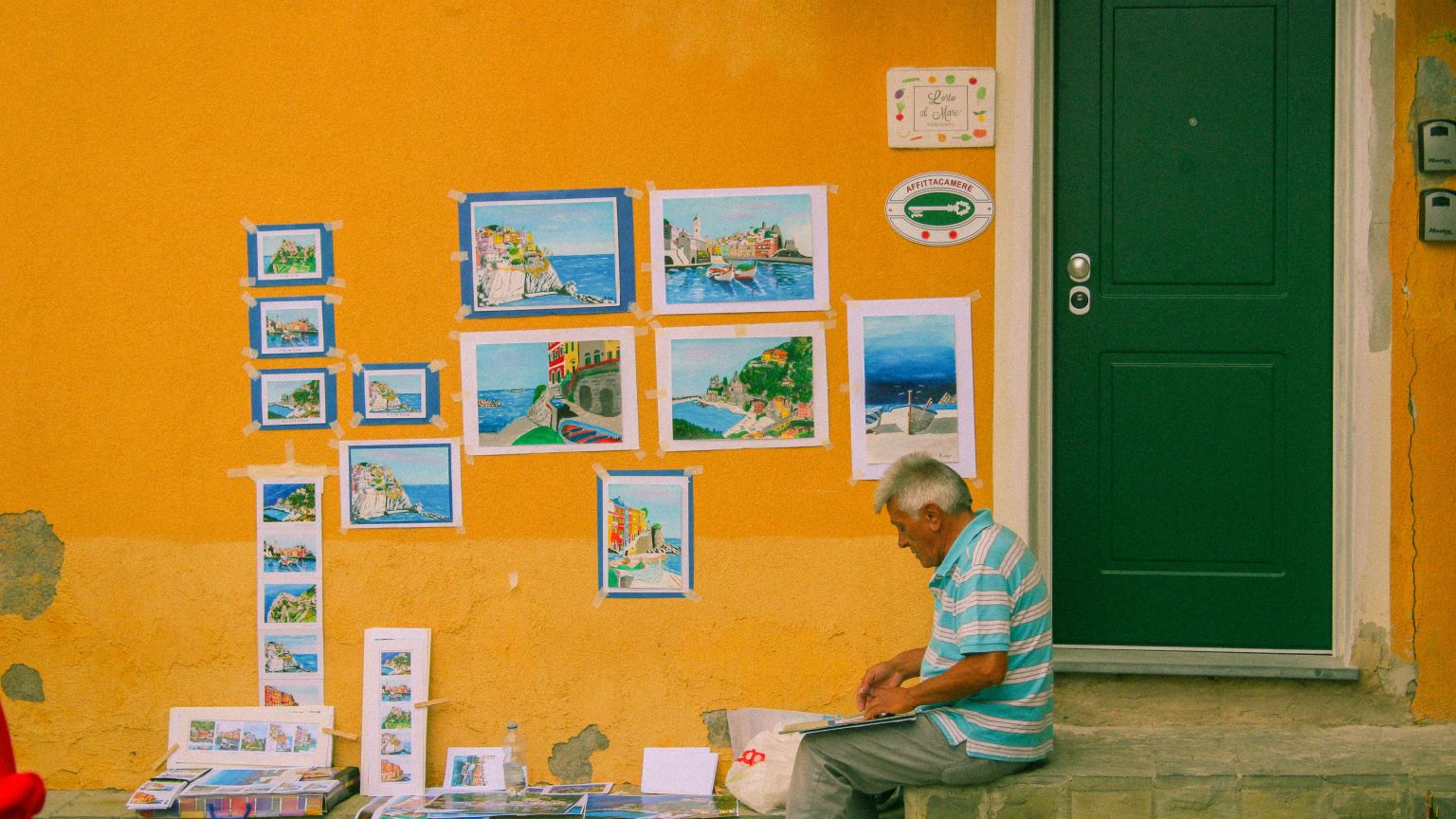Mortality in the past: every second child died

A child dying is one of the most dreadful tragedies one can imagine. We all know that child deaths were more common in the past. But how common? How do we know? And what can we learn from our history?
Archeologists and historians have brought together data from many places and time periods across the world which lets us piece together a picture of our past.
Sweden is a country that has particularly good historical, demographic data. It was the first country to establish an office for population statistics: the Tabellverket, founded in 1749. Looking at the statistical records for the first three decades – the period from 1750 to 1780 – we find that 40% of children died before the age of 15.1
During the same period about half of all children died in Bavaria (Germany), and in France the mortality rate was about 45%. At that time the average couple would have more than 5, 6, or even 7 children, which meant that most parents saw several of their children die.2

Was this unusual? Was the death rate in Europe particularly high at that specific time?
We can look at research for other places and time periods.
Based on skeletons found in the South of modern-day Peru, paleodemographers can estimate the mortality of children who were born two millennia ago. The records suggest a similar figure: almost half of children died before the end of puberty.3

A burial site on the Spanish island of Mallorca offers us a view on child mortality in Europe during the Iron Age. Based on the skeletons found in Mallorca researchers again found that about half of all children did not survive.4

And the same is also true in very different regions and different periods.

Researchers also collected data about hunter-gatherer societies. The 17 different societies include paleolithic and modern-day hunter-gatherers and the mortality rate was high in all of them. On average 49% of all children died.5 At the end of this article you can find more detail about the available evidence for the mortality rates of children in hunter-gatherer societies.

The mortality of children over the long-run
Let’s take all the historical estimates of child mortality and combine them with global data for recent decades to see what this tells us about humanity’s history.6
What is striking about the historical research is how similar child mortality rates were across a wide range of very different historical cultures: No matter where in the world a child was born, about half of them died.

Everyone failed to make progress
Tens of billions of children died.7 Billions of parents mourned helplesslywhen they saw their children dying.
Despite the relentless suffering no one was able to do much about it.
The chart speaks about societies that lived thousands of kilometers away from each other, separated by thousands of years of history, and yet they all suffered the same pain. Whether in Ancient Rome, in hunter-gatherer-societies, in the pre-Columbian Americas, in Medieval Japan or Medieval England, in the European Renaissance, or in Imperial China, every second child died.
While some societies were better off than others, the differences were small. Generation after generation was born into societies that struggled against poverty, hunger, and disease and there is no indication that any society made any substantial and sustained progress against those problems. Substantial progress against child mortality is a recent achievement everywhere.
It is not that people in the past didn’t try to make progress against early death and disease. They tried, of course.8 Healers and doctors had a high status in societies. And people often took on great pain and costs in the hope of improving their children’s health.
The “most common procedure performed by surgeons for almost two thousand years” in Europe was bloodletting. The pain this practice caused makes clear just how desperate people were to achieve any health improvements. The fact that it not only offered no benefits, but that it was indeed harmful to the patients, makes clear just how unsuccessful humanity was for most of its history.
All were suffering as they saw their children die, yet none of them were able to do anything about it.
The key insight for me is that progress is not natural. It is hard. Even against some of the largest problems – the unrelenting death of children – thousands of generations failed to make any progress.
Are these high historical mortality rates plausible?
The historical studies of child mortality don’t provide a full picture of our ancestors’ past. They are snapshots of some moments in the long history of our species. Could they mislead us to believe that mortality rates were higher than they actually were?
There is another piece of evidence to consider that suggests the mortality of children was in fact very high: birth rates were high, but population growth was close to zero.
If every couple has on average four children, the population size would double each generation. But while we know that couples had on average many more children than four, the population did not double with each generation.9 In fact population sizes barely changed at all.
A high number of births without a rapid increase of the population can only be explained by one sad reality: a high share of children died before they could have children themselves.
If anything, the mortality rates shown in the chart above underestimate the true mortality of children. Volk and Atkinson, the two researchers who gathered most of these studies, caution that these historical mortality rates “should be viewed as conservative estimates that generally err toward underestimating actual historic rates”.10 A first reason is that death records were often not produced for children, especially if children died soon after birth. A second reason is that child burial remains, another important source, are often incomplete “due to the more rapid decay of children’s smaller physical remains and the lower frequency of elaborate infant burials”.11
The mortality of children today
The chart above also shows the dramatic progress that was recently achieved. Most children in the world still died at extremely high rates well into the 20th century. Even as recently as 1950 – a time that some readers might well remember – one in four children died globally.
More recently, during our lifetimes, the world has achieved an entirely unprecedented improvement. In a brief episode of human history the global death rate of children declined from around 50% to 4%.
After millennia of suffering and failure, the progress against child mortality is for me one of the greatest achievements of humanity.
This is not an improvement that is only achieved by a few countries. The rate has declined in every single country in the world.
The map shows the latest available data for mortality up to the age of 15. In several countries the rate has declined to about 0.3%, a mortality rate that is more than 100-times lower than in the past. This was achieved in just a few generations. Progress can be fast.

In the richest parts of the world child deaths have become very rare, but differences across countries are high. Somalia – on the Horn of Africa – is the country with the highest rate, 14% of newborns die as children.
The fact that several countries show that it is possible for 99.7% of children to survive shows us what the world can aspire to. Global health has improved, and it is on us to make sure that this progress continues to bring the daily tragedy of child deaths to an end.
Our ancestors could have surely not imagined what is reality today. Let’s make it our goal to give children everywhere the chance to live a long and healthy life.
Republished under a Creative Commons BY license from Our World In Data. Read the original article.





